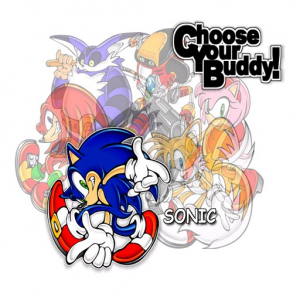![]()
Sonic X-treme is an unreleased platform game in the Sonic the Hedgehog series. It started as a project for a new Sonic game, developed by Sega Technical Institute (STI) for the Mega Drive / Genesis but soon moved to the Sega 32X (Sonic Mars) and eventually to the Sega Saturn. After many problems and a long hiatus of development hell, it was finally dropped in 1997.
X-treme for the Saturn was just the “final” project of a long list of Sonic prototypes, created to find the best way to develope a new 3D Sonic for the new SEGA console. The X-treme project can be seen as 2 different games in one as it was initially developed separately by two teams in parallel. The first team was in charge of developing the main game engine, while the second team was creating the separate “boss level” portions of the game that was suggested to use a different viewpoint from the main game.
From a code standpoint the boss engine and main game were basically two games developing at the same time that shared some global memory to remember game state and use a process called executable chaining to switch from the main game to boss levels and back. The boss level engine began to evolve into a game of its own using this new source of inspiration, trying to stay closer to its 2D roots by adopting a 3D but side-scrolling viewpoint.
There were four planned Zones: Jade Gully, Crystal Frost, Red Sands, and Galaxy Fortress. Sonic himself was to be equipped with a large set of new moves, including a spin slash, a ring throwing ability, and a downward dash.
In March 1996, Sega of Japan representatives went over to Sega Technical Institute’s headquarters to verify the game’s progress. They were unimpressed at the progress made on the main game engine, but they were impressed by the boss engine and they requested the entire game be reworked on that engine instead.
By then, the team was running short on manpower, and the project all had fallen on the Sonic Xtreme Project Team to finish it up before the Christmas deadline. Coffin, who had been overworking non-stop to get this project out, came down with pneumonia. Since Coffin was leading the technology end and creating the engine, the loss caused the project to be indefinitely delayed and the studio director informed management that the team could not continue and the game would not be released in time for Christmas.
The project was officially cancelled. Sega of America decided to discontinue the game and switched to an alternative project: Sonic 3D Blast. [info from Wikipedia]
A disc of a test engine of X-treme exists. A copy was sold at auction to an anonymous collector in September 2005, and a high-quality gameplay video was expected to be released by the end of the year. An animated GIF image of the gameplay was released to the community. The disk image was finally leaked in July 17, 2007.
Images:
Some images from: Sonic Xtreme Compendium – Sonic Cult – Segagaga Domain
Videos:

